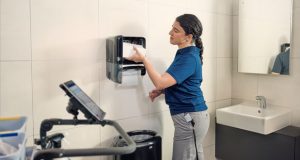UK restaurants are experiencing efficiency issues as a direct result of equipment downtime, impacting operations, customer experience and reputation. A survey of 100 restaurant workers found that dishwashers are one of the main culprits, with half suffering a breakdown at least once per quarter, and 26% having experienced dishwasher downtime for more than 20 business hours.
The research, conducted by Miele’s Professional department, found that breakdowns and faults are by far the biggest issue impacting the use of dishwashers in restaurants, increasing staff workload (64%) and causing slower service (55%). As well as a likely impact on the customer experience, patchy service can also have a wider influence on restaurant reputation; which was identified as the most relevant pain point by respondents.
Perhaps unsurprisingly and given the standards that apply for the Food Hygiene Rating, the ability to wash to a high standard was identified as the most important feature of commercial dishwashers by 73%, as dirty items can have a significant negative impact on customer perception of the quality and cleanliness of the establishment. This was closely followed by ‘being built to last’ with 68% of the vote. Durability and longevity of machines is a high priority to minimise the impact of downtime on the business.
However, contemporary tableware trends appear to be making the dishwashing job more difficult. An overwhelming 93% of respondents believe that presentation of food and drink is important, with half saying that it’s becoming more so. The serving of food using alternative materials was identified as the biggest trend, while nearly two in five noted the use of different plate shapes, sizes and colours.
Fifty-seven per cent of restaurant workers believe that customers expect their food and drink to be presented more creatively, and almost half have been impacted by the rise in the number of plates and dishes used to serve guest meals. The survey revealed that, on average, the range and type of glassware/barware used by restaurants has increased by 73%, while crockery/table/serveware has increased by 59%, suggesting that the need for an efficient and adaptable dishwashing process is more crucial now than ever.
When it comes to the ‘man vs machine’ debate, restaurants would generally like to increase the proportion of dishwashing done by machine and decrease handwashing in all areas, with 53% agreeing that this would be the customers’ preference. According to 61% of respondents, handwashing is worse than a machine for speed, and 52% said it was worse for hygiene.
However, restaurant workers would like more dishwashing to be completed by machine than currently occurs due to the changing nature of tableware. Sixty-four per cent hand wash when items need prewashing or if items are fragile (47%) and more than two in five hand wash when the dishwasher breaks.
Simon Hart, National Account Manager for the Professional Division of Miele, commented: “Our market research revealed a number of key insights that restauranteurs need to take into account – most notably, the importance of fully-functioning and reliable equipment on day-to-day operations, the customer experience, and the wider reputation of the business.
“As restaurant closures in Britain now average 18 a week, profitability is key and efficiencies from equipment are beneficial to help keep businesses trading. With food and drink presentation becoming more important to customers and tableware trends making the dishwashing function more complex, restauranteurs should opt for reliable commercial machines that offer a range of specialist functions so glass and serveware can be cleaned to a high quality and turned around quickly during service.”





